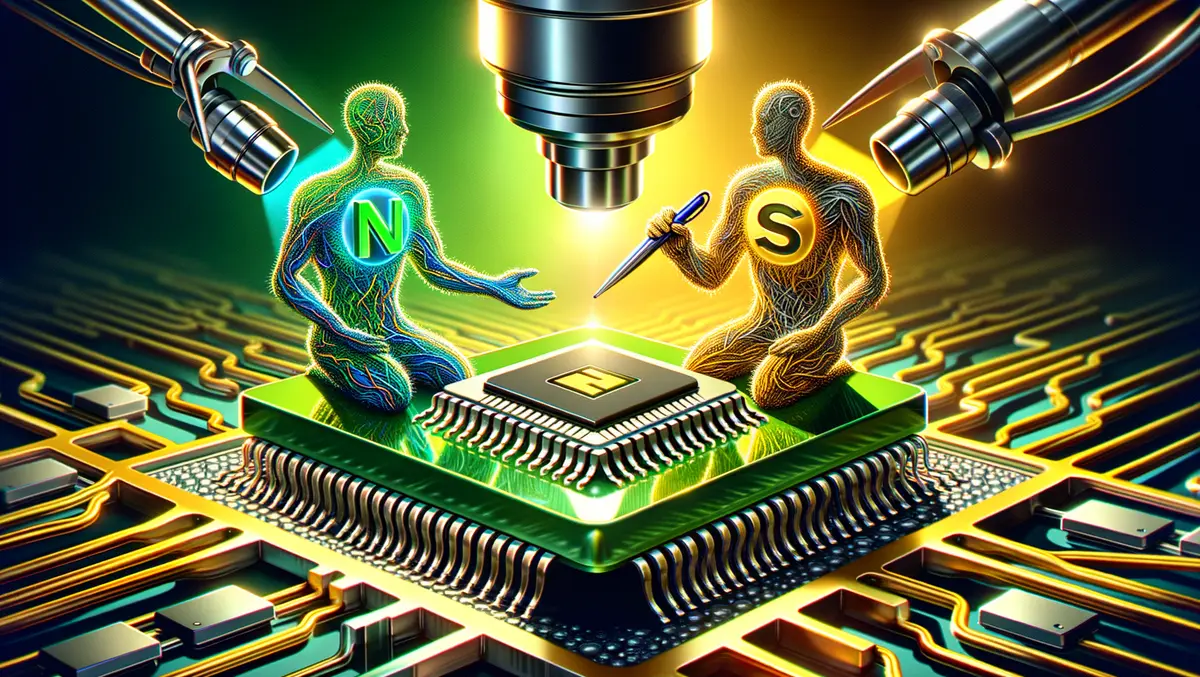NVIDIA has made a significant step towards pushing the limits of physics for next-gen advanced semi-conductor chips. The computational lithography giant has announced a foray into production along with leading foundry, Taiwan Semiconductor Manufacturing Company (TSMC), and Synopsys, a front-runner in silicon to systems design solutions. Together, these industry titans have meshed NVIDIA's computational lithography platform, NVIDIA cuLitho, into their software, manufacturing procedures, and systems to expedite chip fabrication.
CEO of NVIDIA, Jensen Huang, described computational lithography as an essential building block for chip manufacturing. "Our work on cuLitho, in partnership with TSMC and Synopsys, applies accelerated computing and generative AI to open new frontiers for semiconductor scaling," he stated. The collaboration will support the latest NVIDIA Blackwell architecture GPUs in the near future.
The integration of cuLitho with the TSMC workflow has resulted in significant breakthroughs in performance, improved throughput, reduced cycle time and power requirements. Dr. C.C. Wei, CEO of TSMC, shared, "We are moving NVIDIA cuLitho into production at TSMC, leveraging this computational lithography technology to drive a critical component of semiconductor scaling."
An accomplishment of this partnership is the considerable acceleration of curvilinear flows (mask shapes represented by curves) and Manhattan-style flows (mask shapes constrained to be either horizontal or vertical) in the testing phase. The companies shared a near 60x improvement on traditional flows, highlighting the potential for innovative patterning technologies.
Advancements in computational lithography do not stop at acceleration. NVIDIA is also showing the way in adopting generative AI algorithms to enhance the value of the cuLitho platform. These algorithms have speeded up the already accelerated processes by 2x, potentially opening the doors to a revolution in the semi-conductor manufacturing industry.
President and CEO of Synopsys, Sassine Ghazi echoed this sentiment. He noted that the move to advanced nodes has exponentially driven up the complexity and compute cost of computational lithography. "Our collaboration with TSMC and NVIDIA is critical to enabling angstrom-level scaling as we pioneer advanced technologies to reduce turnaround time by orders of magnitude through the power of accelerated computing," he said.
The application of generative AI to computational lithography not only ensures more efficient manufacturing but also provides an almost perfect inverse solution for managing the diffraction of light. The result is an accelerated overall optical proximity correction (OPC) process by a rate of two. This breakthrough allows fabs to reallocate their compute capacity and engineering workforce towards the development of more innovative solutions for new technologies for 2nm and beyond.
NVIDIA, TSMC, and Synopsys are collectively pioneering a new era in semiconductor manufacturing. This collective push into production of accelerated computational lithography could lead to not only more productive chip creation but also a boon toward more innovative solutions in the design and development of advanced technologies.



